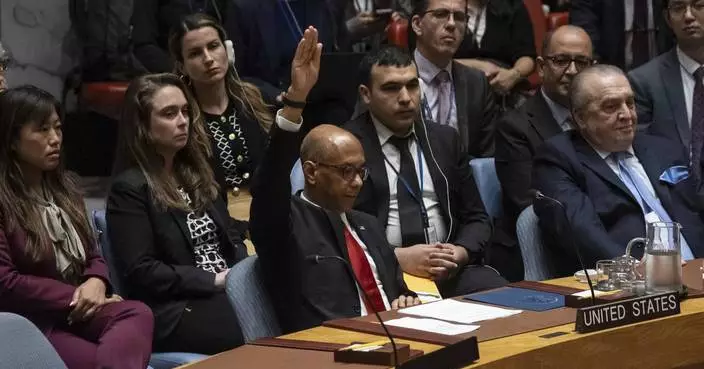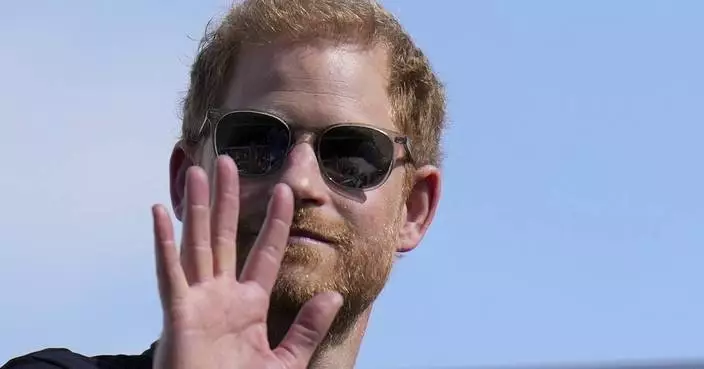Facebook CEO Mark Zuckerberg promoted free expression Thursday in a speech at Georgetown University, but restrictions on news coverage of the event drew criticism that its rules undermined its message.
Reporters were not allowed to ask questions — only students were given that chance, filtered by a moderator. Facebook and Georgetown barred news organizations from filming, though they were able to send still photographers. The only options for video were a livestream on Georgetown's social media site or footage made available by Facebook.
"It's quite ironic," said Sally Hubbard, director of enforcement strategy at the Open Markets Institute and a former state prosecutor. More generally, she said, "The key to free expression is to not have one company control the flow of speech to more than 2 billion people, using algorithms that amplify disinformation in order to maximize profits."

Facebook CEO Mark Zuckerberg speaks at Georgetown University, Thursday, Oct. 17, 2019, in Washington. (AP PhotoNick Wass)
Facebook, Google, Twitter and other companies are trying to oversee internet content while also avoiding infringing on First Amendment rights. The pendulum has swung recently toward restricting hateful speech that could spawn violence. The shift follows mass shootings in which the suspects have posted racist screeds online or otherwise expressed hateful views or streamed images of attacks.
Facebook also has come under criticism for not doing enough to filter out phony political ads.
"Right now, we're doing a very good job at getting everyone mad at us," Zuckerberg told the packed hall at Georgetown.
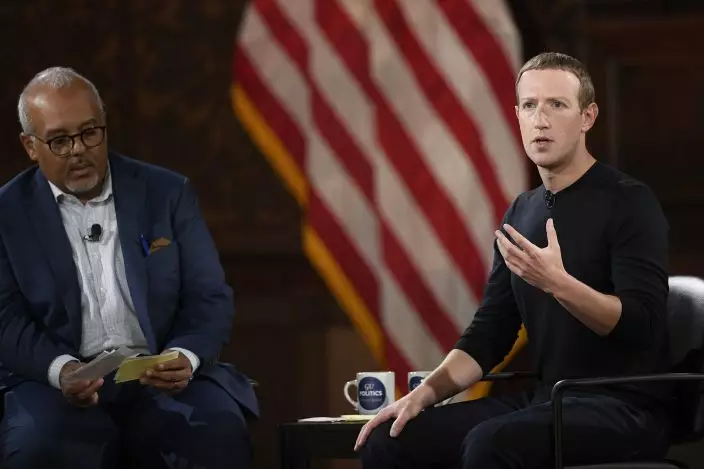
Facebook CEO Mark Zuckerberg speaks at Georgetown University, Thursday, Oct. 17, 2019, in Washington. At left is Mo Elleithee, the founding Executive Director of Georgetown University's Institute of Politics and Public Service. (AP PhotoNick Wass)
He said serious threats to expression are coming from places such as China, where social media platforms used by protesters are censored, and from court decisions restricting the location of internet users' data in certain countries.
"I'm here today because I believe that we must continue to stand for free expression," he said. "You should be able to say things that other people don't like, but you shouldn't be able to say things that put people in danger."
Taking note of mounting criticism of the market dominance of Facebook and other tech giants, Zuckerberg acknowledged the companies' centralized power but said it's also "decentralized by putting it directly into people's hands. ... Giving people a voice and broader inclusion go hand in hand."
John Stanton, a former fellow at Georgetown who heads a group called the "Save Journalism Project," called the CEO's appearance "a joke."
Zuckerberg "is the antithesis of free expression," Stanton said in a statement. "He's thrown free speech, public education and democracy to the wayside in his thirst for power and profit."
The social media giant, with nearly 2.5 billion users around the globe, is under heavy scrutiny from lawmakers and regulators following a series of data privacy scandals, including lapses in opening the personal data of millions of users to Trump's 2016 campaign.
Facebook and other social media platforms have drawn accusations from President Donald Trump and his allies that their platforms are steeped in anti-conservative bias.
Zuckerberg recently fell into a tiff with Sen. Elizabeth Warren, a leading Democratic presidential candidate, who ran a fake political ad on Facebook taking aim at the CEO. Warren has proposed breaking up big tech companies. With the phony ad, she was protesting Facebook's policy of not fact-checking politicians' speech or ads in the same way it enlists outside parties to fact-check news stories and other posts.
Facebook responded to Warren's move by tweeting that the Federal Communications Commission "doesn't want broadcast companies censoring candidates' speech. We agree it's better to let voters — not companies — decide."
The social media network also rebuffed requests that it remove a misleading video ad from Trump's re-election campaign targeting Democrat Joe Biden.
Several of the students' questions to Zuckerberg at Georgetown pointed up the conflict. One asked, if Facebook supports free speech, "why is conservative content disproportionately censored?" But another asserted that the policy of not fact-checking political ads is pro-conservative.
"I think it would be hard to be biased against both sides," Zuckerberg replied, smiling.
Asked about the handling of questions, Facebook spokeswoman Ruchika Budhjara said, "They were submitted by students as they walked into the room. And they're being picked at random by Georgetown."
AP Technology Writer Barbara Ortutay in San Francisco contributed to this report.
VENICE, Italy (AP) — Jeffrey Gibson’s takeover of the U.S. pavilion for this year’s Venice Biennale contemporary art show is a celebration of color, pattern and craft, which is immediately evident on approaching the bright red facade decorated by a colorful clash of geometry and a foreground dominated by a riot of gigantic red podiums.
Gibson, a Mississippi Choctaw with Cherokee descent, is the first Native American to represent the United States solo at the Venice Biennale, the world’s oldest contemporary art show. For context, the last time Native American artists were included was in 1932.
Gibson, 52, accepts the weight of the honor, but he prefers to focus on how his participation can forge greater inclusion going forward.
“The first is not the most important story," Gibson told The Associated Press this week before the pavilion’s inauguration on Thursday. “The first is hopefully the beginning of many, many, many more stories to come."
The commission, his first major show in Europe, comes at a pivotal moment for Gibson. His 2023 book “An Indigenous Present" features more than 60 Indigenous artists, and he has two major new projects, a facade commission for the Metropolitan Museum of Art in New York and an exhibition at the Massachusetts Museum of Contemporary Art.
Gibson’s eye-catching exhibition titled “the space in which to place me," features text in beadwork sculptures and paintings taken from U.S. founding documents, music, sermons and proverbs to remind the viewer of the broken promises of equity through U.S. history. The vibrant use of color projects optimism. In that way, Gibson’s art is a call to action.
“What I find so beautiful about Jeffrey’s work is its ability to function as a prism, to take the traumas of the past and the questions about identity and politics and refract them in such a way that things that realities that have become flattened … can become these beautiful kaleidoscopes, which are joyous and celebratory and critical all at the same time," said Abigail Winograd, one of the exhibition’s curators.
“When I see people walk through the pavilion and kind of gasp when they walk from room to room, that’s exactly what we wanted," Winograd said.
Entering the pavilion, the beaded bodices of sculptures in human form are emblazoned with dates of U.S. legislation that promised equity, the beading cascading into colorful fringe. A painting quotes George Washington writing, “Liberty, when it begins to take root, is a plant of rapid growth," in geometric letters that meld into a colorful patterned background.
By identifying specific moments in U.S. history, Gibson said that he wants to underline that “people who are fighting for equity and justice today, we’re not the first.
“This has been a line in the history of American culture. But I’m hoping that people will think about why … some of these things … have either been revoked or have not come into fruition,” he said.
Craft is at the center of Gibson’s art, both in defiance of past denigration of craft and as a way to confront “the traumatic histories of Native American people,” he said.
“There is something very healing about the cycle of making," Gibson explained.
The pavilion’s intricate beaded sculptures owe a debt to Native American makers of the past without imitating them, employing couture techniques to create something completely new. In the way of his forbears, Gibson uses beads sourced from all over the world, including vintage beads from Japan and China, and glass beads from the Venetian island of Murano.
Paper works incorporate vintage beadwork purchased from websites, estate and garage sales in mixed media displays that honor the generations of Native American makers that preceded him.
Gibson's themes fit well into the message of inclusion of the main Biennale exhibition, titled “Stranieri Ovunque -- Strangers Everywhere,” which runs in tandem with around 90 national pavilions from April 20-Nov. 24.
His personal history has placed him firmly in what he calls the “diasporic history of Indigenous people.” His father's job took his family abroad when he was a child to Germany and then South Korea, and he later studied in Chicago and London. His partner is Norwegian artist Rune Olsen.
Through all of this, Gibson has picked up traditions and practices that go beyond his Indigenous background.
“I’ve looked at op art, pattern and decoration. I've looked at psychedelia, I have taken part in rave culture and queer culture and drag and the whole spectrum," Gibson said.
"And so for me, I would not be telling you the whole truth if I only chose to spoke about indigeneity. But my body is an Indigenous body — it’s all funneled through this body,'' he said. ”And so my hope is that by telling my experience, that everyone else can project their own kind of intersected, layered experience into the world.”
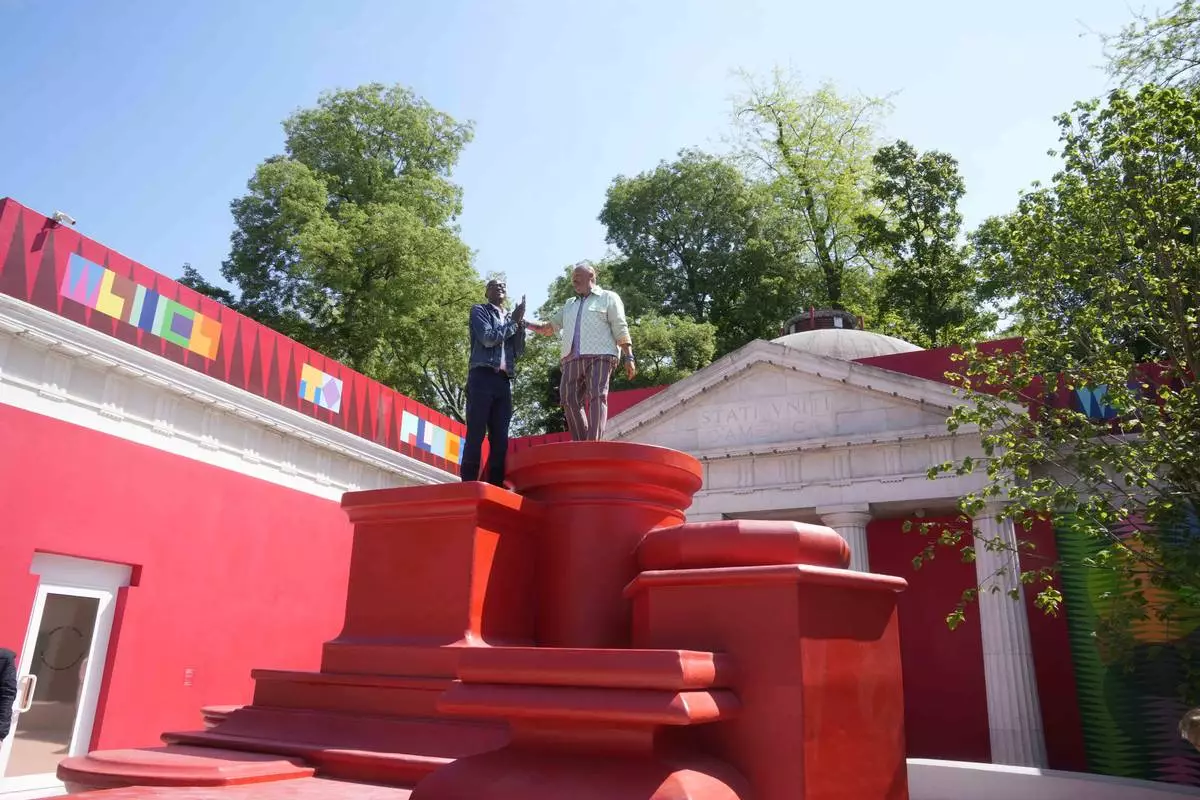
Artist Jeffrey Gibson, right, poses with artist Mark Bradford at the U.S. pavilion during the media open day at the 60th Biennale of Arts in Venice, Italy, Tuesday, April 16, 2024. A Mississippi Choctaw of Cherokee descent, Gibson is the first Native American to represent the United States solo at the Venice Biennale, the world’s oldest contemporary art show. Gibson mixes Western modernism and Native American craft in his vibrantly hued paintings and sculptures. (AP Photo/Luca Bruno)
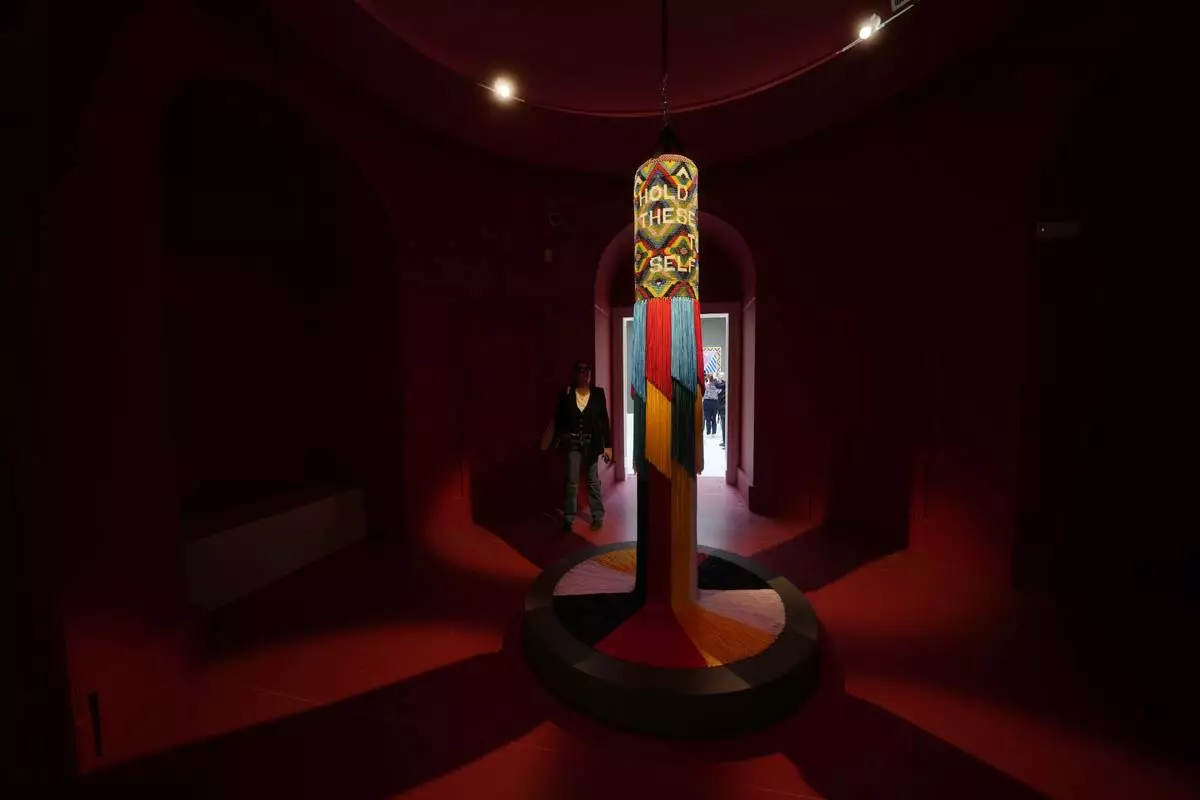
Visitors look at sculptures on display inside the US pavilion by artist Jeffrey Gibson during the 60th Biennale of Arts in Venice, Italy, Tuesday, April 16, 2024. A Mississippi Choctaw of Cherokee descent, Gibson is the first Native American to represent the United States solo at the Venice Biennale, the world’s oldest contemporary art show. Gibson mixes Western modernism and Native American craft in his vibrantly hued paintings and sculptures. (AP Photo/Luca Bruno)
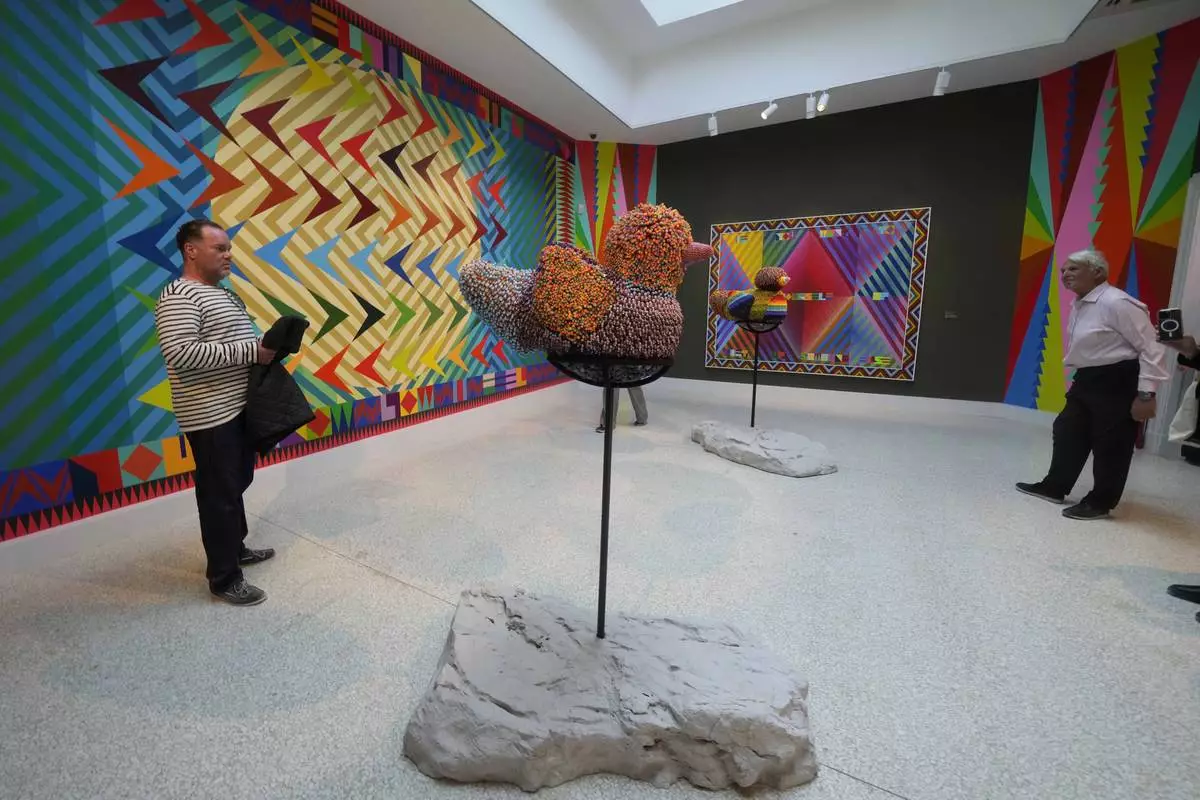
Visitors look at sculptures on display inside the US pavilion by artist Jeffrey Gibson during the 60th Biennale of Arts in Venice, Italy, Tuesday, April 16, 2024. A Mississippi Choctaw of Cherokee descent, Gibson is the first Native American to represent the United States solo at the Venice Biennale, the world’s oldest contemporary art show. Gibson mixes Western modernism and Native American craft in his vibrantly hued paintings and sculptures. (AP Photo/Luca Bruno)

Visitors look at sculptures on display inside the US pavilion by artist Jeffrey Gibson during the 60th Biennale of Arts in Venice, Italy, Tuesday, April 16, 2024. A Mississippi Choctaw of Cherokee descent, Gibson is the first Native American to represent the United States solo at the Venice Biennale, the world’s oldest contemporary art show. Gibson mixes Western modernism and Native American craft in his vibrantly hued paintings and sculptures. (AP Photo/Luca Bruno)

Visitors look at sculptures on display inside the US pavilion by artist Jeffrey Gibson during the 60th Biennale of Arts in Venice, Italy, Tuesday, April 16, 2024. A Mississippi Choctaw of Cherokee descent, Gibson is the first Native American to represent the United States solo at the Venice Biennale, the world’s oldest contemporary art show. Gibson mixes Western modernism and Native American craft in his vibrantly hued paintings and sculptures. (AP Photo/Luca Bruno)
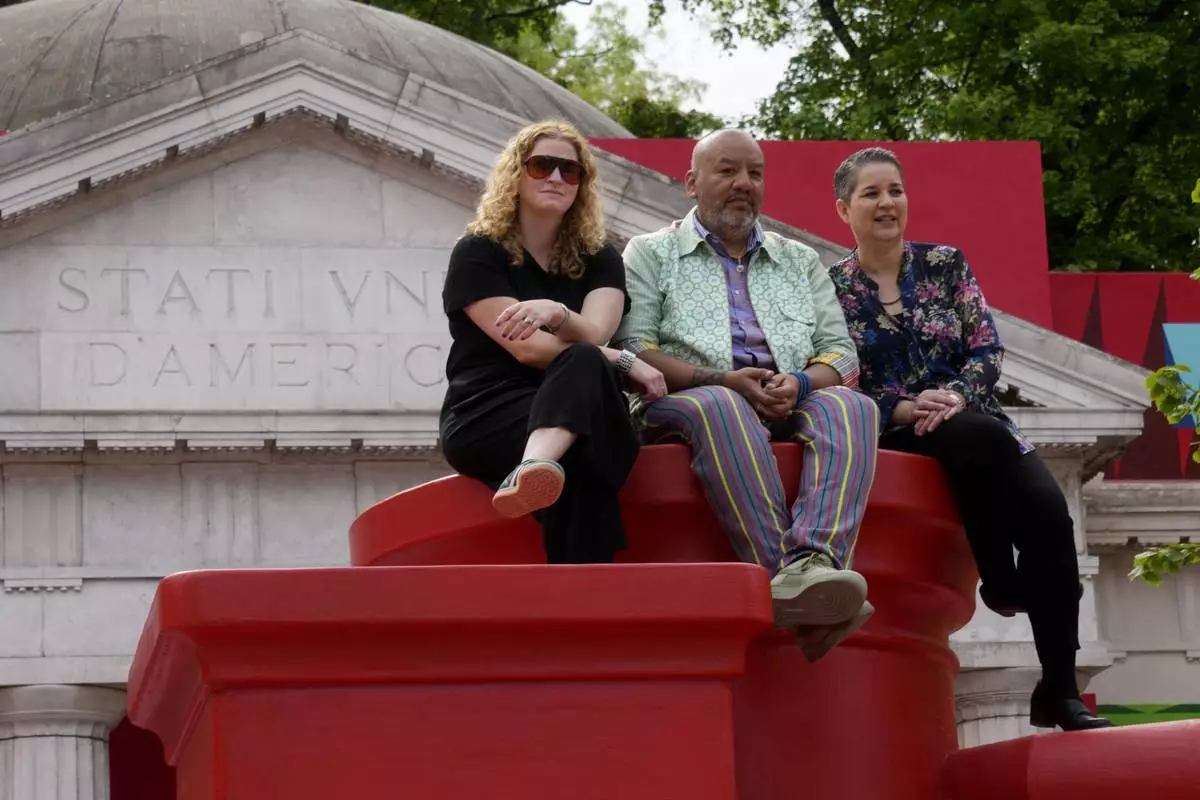
From left, Curator Abigail Winograd, artist Jeffrey Gibson, and Curator Kathleen Ash-Milby pose at the US pavilion during the media open day at the 60th Biennale of Arts in Venice, Italy, Tuesday, April 16, 2024. A Mississippi Choctaw of Cherokee descent, Gibson is the first Native American to represent the United States solo at the Venice Biennale, the world’s oldest contemporary art show. Gibson mixes Western modernism and Native American craft in his vibrantly hued paintings and sculptures. (AP Photo/Luca Bruno)
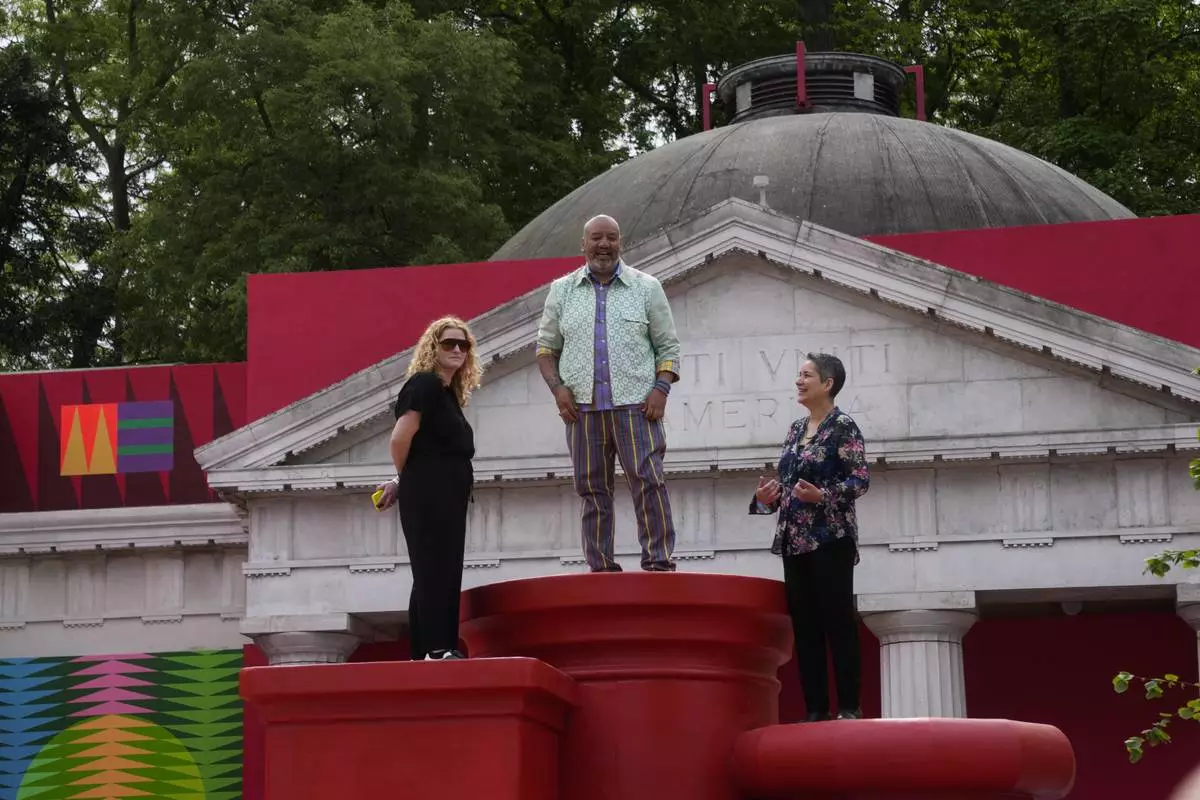
From left, Curator Abigail Winograd, artist Jeffrey Gibson, and Curator Kathleen Ash-Milby pose at the US pavilion during the media open day at the 60th Biennale of Arts in Venice, Italy, Tuesday, April 16, 2024. A Mississippi Choctaw of Cherokee descent, Gibson is the first Native American to represent the United States solo at the Venice Biennale, the world’s oldest contemporary art show. Gibson mixes Western modernism and Native American craft in his vibrantly hued paintings and sculptures. (AP Photo/Luca Bruno)
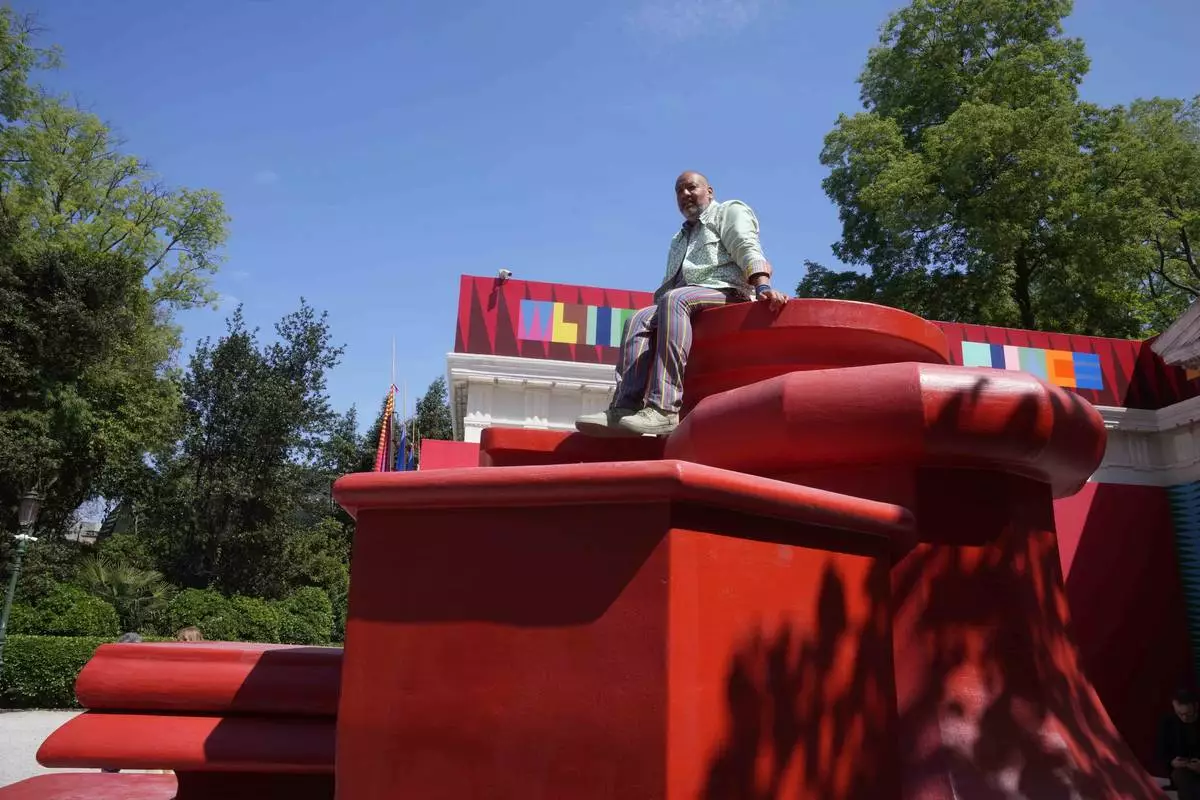
Artist Jeffrey Gibson poses at the US pavilion during a media open day at the 60th Biennale of Arts in Venice, Italy, Tuesday, April 16, 2024. A Mississippi Choctaw of Cherokee descent, Gibson is the first Native American to represent the United States solo at the Venice Biennale, the world’s oldest contemporary art show. Gibson mixes Western modernism and Native American craft in his vibrantly hued paintings and sculptures. (AP Photo/Luca Bruno)
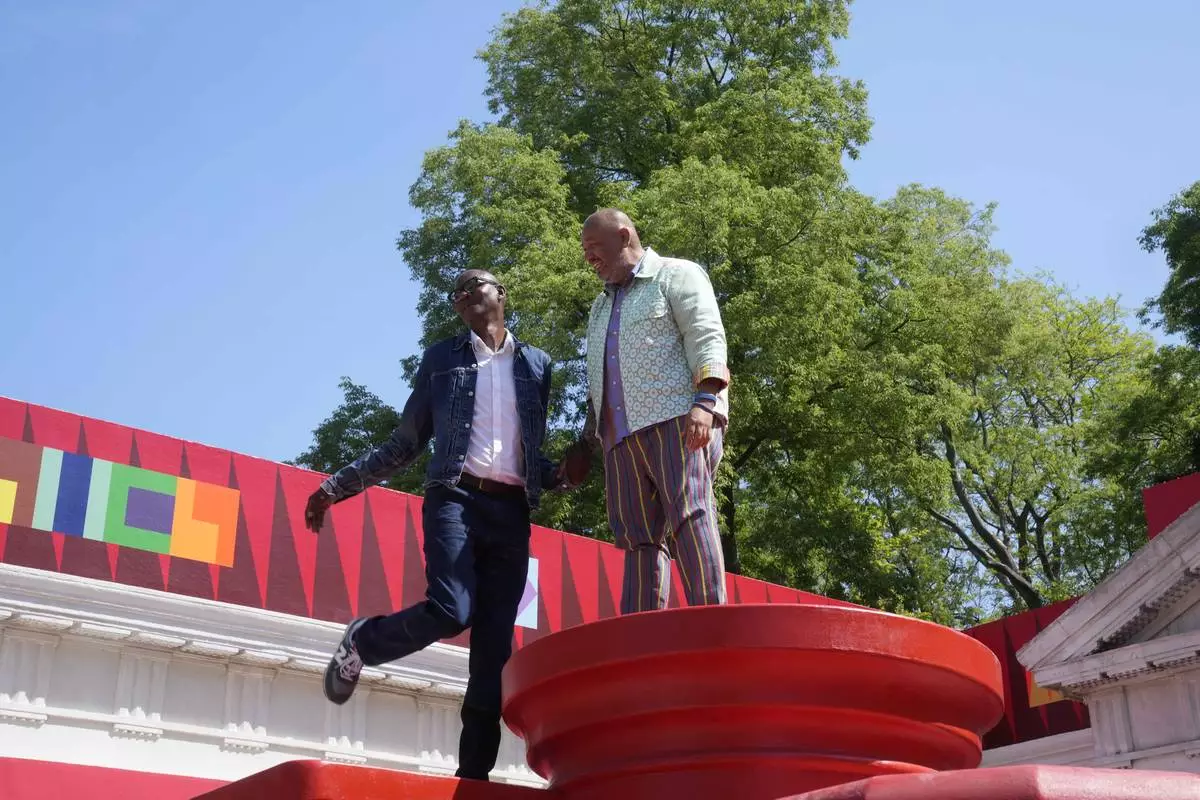
Artist Jeffrey Gibson, right, poses with artist Mark Bradford at the U.S. pavilion during the media open day at the 60th Biennale of Arts in Venice, Italy, Tuesday, April 16, 2024. A Mississippi Choctaw of Cherokee descent, Gibson is the first Native American to represent the United States solo at the Venice Biennale, the world’s oldest contemporary art show. Gibson mixes Western modernism and Native American craft in his vibrantly hued paintings and sculptures. (AP Photo/Luca Bruno)
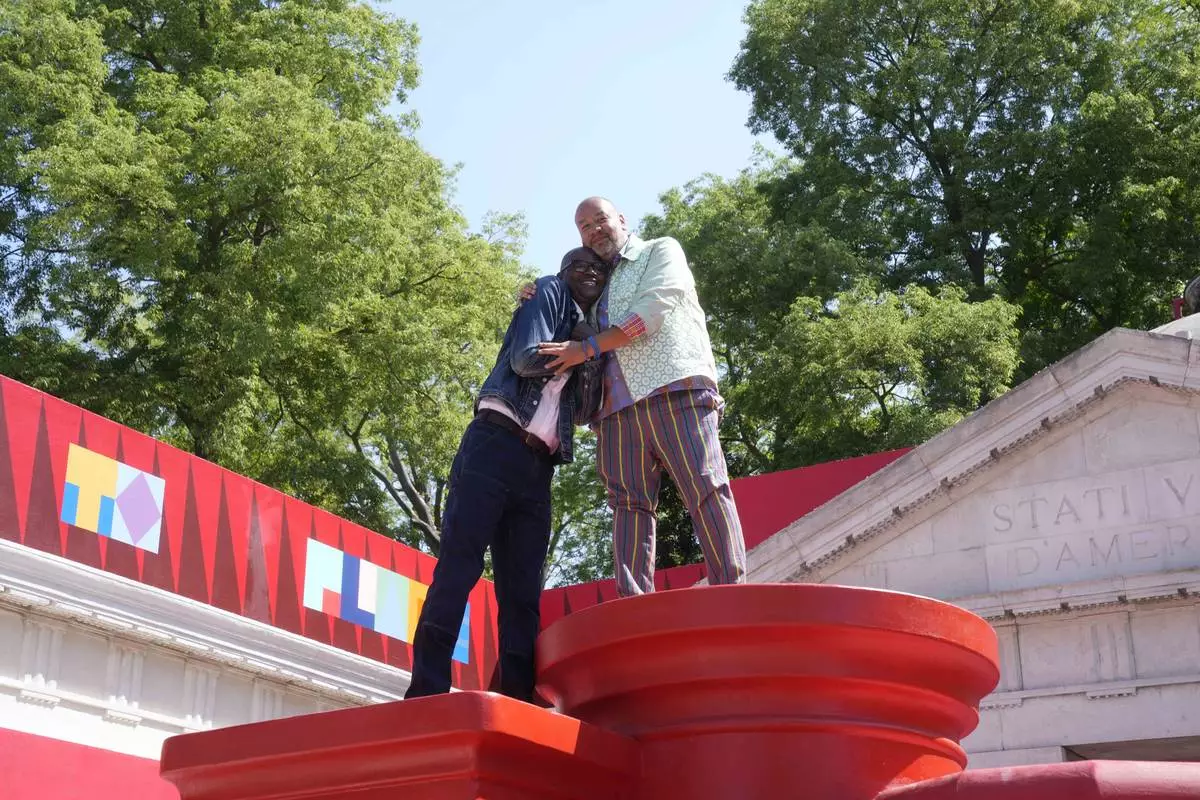
Artist Jeffrey Gibson, right, hugs artist Mark Bradford at the U.S. pavilion during media open day of the 60th Biennale of Arts exhibition in Venice, Italy, Tuesday, April 16, 2024. A Mississippi Choctaw of Cherokee descent, Gibson is the first Native American to represent the United States solo at the Venice Biennale, the world’s oldest contemporary art show. Gibson mixes Western modernism and Native American craft in his vibrantly hued paintings and sculptures. (AP Photo/Luca Bruno)
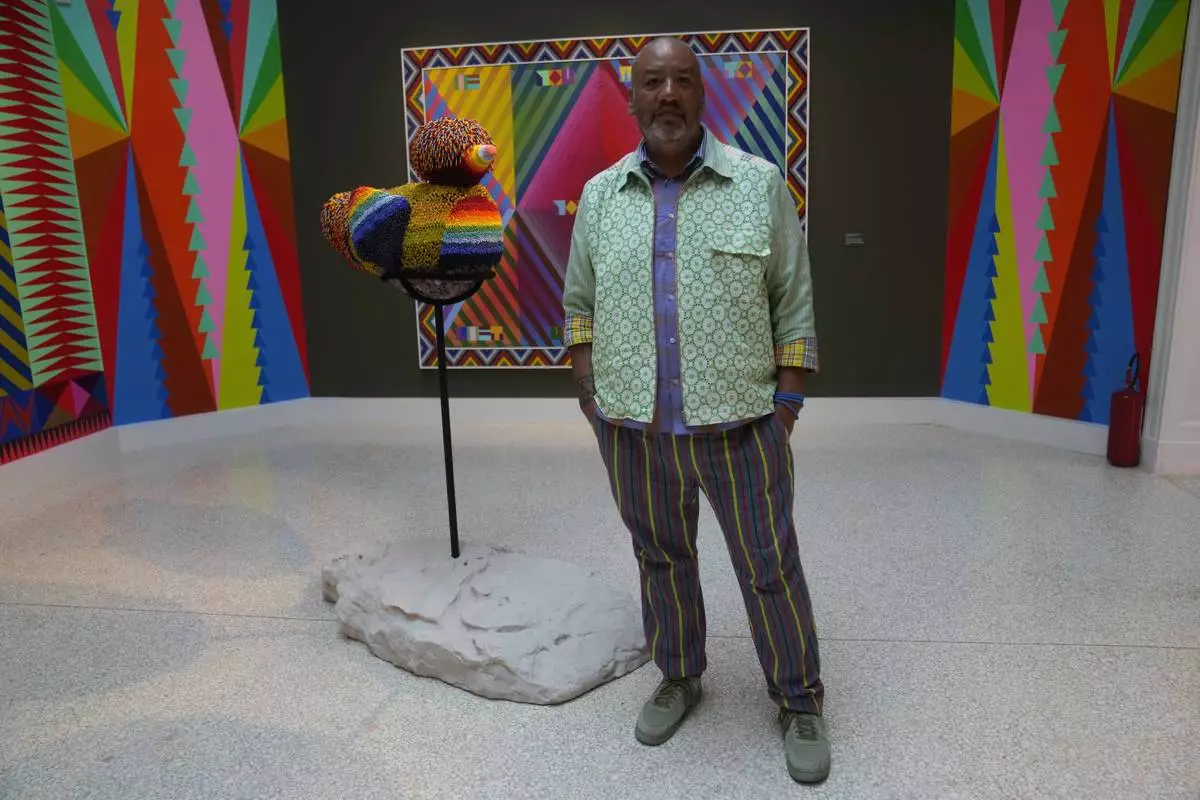
Artist Jeffrey Gibson poses inside the US pavilion during the media open day at the 60th Biennale of Arts in Venice, Italy, Tuesday, April 16, 2024. A Mississippi Choctaw of Cherokee descent, Gibson is the first Native American to represent the United States solo at the Venice Biennale, the world’s oldest contemporary art show. Gibson mixes Western modernism and Native American craft in his vibrantly hued paintings and sculptures. (AP Photo/Luca Bruno)
















